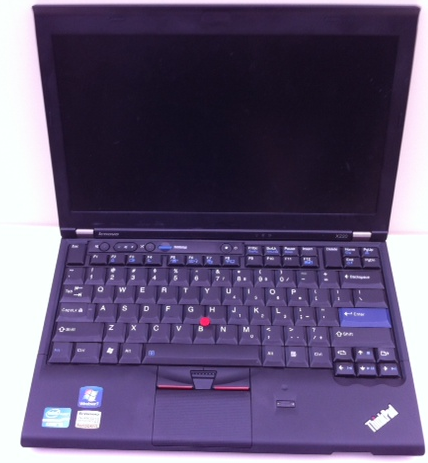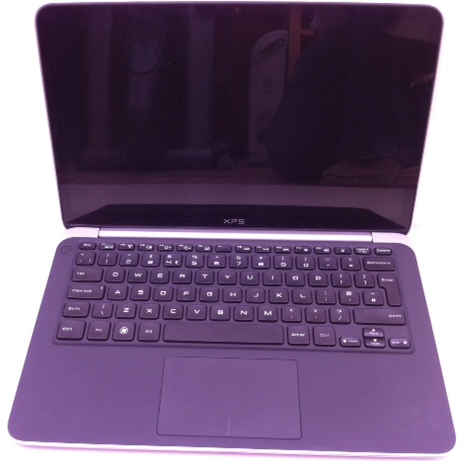An enterprise Ultrabook
I’ve recently had a couple of laptops on loan that have got me thinking about what the perfect enterprise laptop might feature.
Business – Lenovo X220
I was loaned this to try out a super secret new security product. Regular readers here will know that I have a fondness for Lenovo laptops, and this is probably the best one I’ve ever used – an almost perfect balance of performance, size, weight and endurance.
What I like:
- Performance – SSD and 8GB RAM are a potent combination, and I never threw anything at the Core i5 CPU that would cause it to sweat.
- DisplayPort and VGA connectors – so no snags getting hooked up to a variety of displays.
- Great keyboard.
- Wired Gigabit ethernet -making the transfer of some videos to watch on the plane painless.
- Size and weight – 1.5kg.
- Removable SSD – so I could take a snapshot of the machine as it was given to me, and revert back to that later.
What could be even better:
- The screen is OK at 1366 x 768, but I’ve used finer pitch screens before and liked them.
- I didn’t have a chance to test a docking station, so it’s not clear to me whether or not it can drive two displays digitally (like my HP laptop does at work)[1].
- Waking from sleep is a bit hit and miss, and I’ve more than once ended up shutting it down completely rather than waking it up :(
Consumer – Dell XPS13
- Looks great
- Trackpad is surprisingly nice to use (I generally prefer at TrackPoint) – this one is really big, and supports a range of multi touch gestures that ease navigation.
- The chicklet keyboard is also good, and is backlit – making typing in the dark a breeze.
- No fan or exhaust grill – so no heating up the bottle of water on my airline tray table. The quid pro quo here is that the base can get somewhat warm.
- The screen is once again 1366 x 768, and whilst the Gorilla Glass looks great it’s also a little too reflective at times.
- A single mini DisplayPort socket means carrying around a bagful of dongles to get hooked up to external displays, and limits connectivity to one screen. There’s also WiDi[2], but I’ve yet to find something that I can use that with.
- If feels heavy even though it’s 100g lighter than the X220 – clearly density matters.
Enterprise Ultrabook – the best of both worlds?
- Removable drive – so that sensitive corporate data (and precious user config/state) can be easily held onto.
- Some means to drive two external screens and the rest of the stuff on a typical work desk – keyboard, mouse, webcam, headset etc.[3]
- A means to connect to a wired network, as using WiFi with a VPN can be a time consuming and frustrating process. (This should be incorporated into the solution for connectivity for the point above).
- An optional smartcard slot[4].
The Apple Alternative
Conclusion
[1] It seems that the typical office still hasn’t got with having proper large monitors (by which I mean 27″ or 30″), having instead pairs of 19″, 22″ or 24″ screens.
[2] The first time I heard this talked about I heard ‘Wide Eye’ rather than ‘WiDi’ – somehow this made sense for a system able to wirelessly project images.
[3] Traditionally this has been done with a docking station. I think the truly modern way would be a Thunderbolt connection to a monitor that’s then the hub for everything else, but it’s not reasonable to expect new machines to drive an upgrade of everything else so perhaps some sort of (Thunderbolt) docking strip is the way ahead.
[4] The X220 doesn’t seem to have one of these (though it does have a fingerprint reader, which might be an alternative for some, and it also has an ExpressCard slot that I’m sure could be put to work in this area).
[5] Large enterprises have a habit of smashing operating systems down to their constituent parts and (at great cost) reassembling them. They also generally have enterprise licensing deals with Microsoft. I hence can’t see Boot Camp being that much of an obstacle to adoption.
Filed under: review, technology | 5 Comments
Tags: business, consumer, corporate, displayport, docking, dual screen, enterprise, laptop, network, smartcard, Thunderbolt, ultrabook, Wide Eye, WiDi



Some conflicting thoughts on the viability of Thunderbolt as a docking solution over at ExtremeTech
Looks like Thunderbolt docking stations are starting to hit the market. Early models look pricey and limited in terms of multi monitor support.
Tom’s Hardware – Everything You Need To Know About Thunderbolt